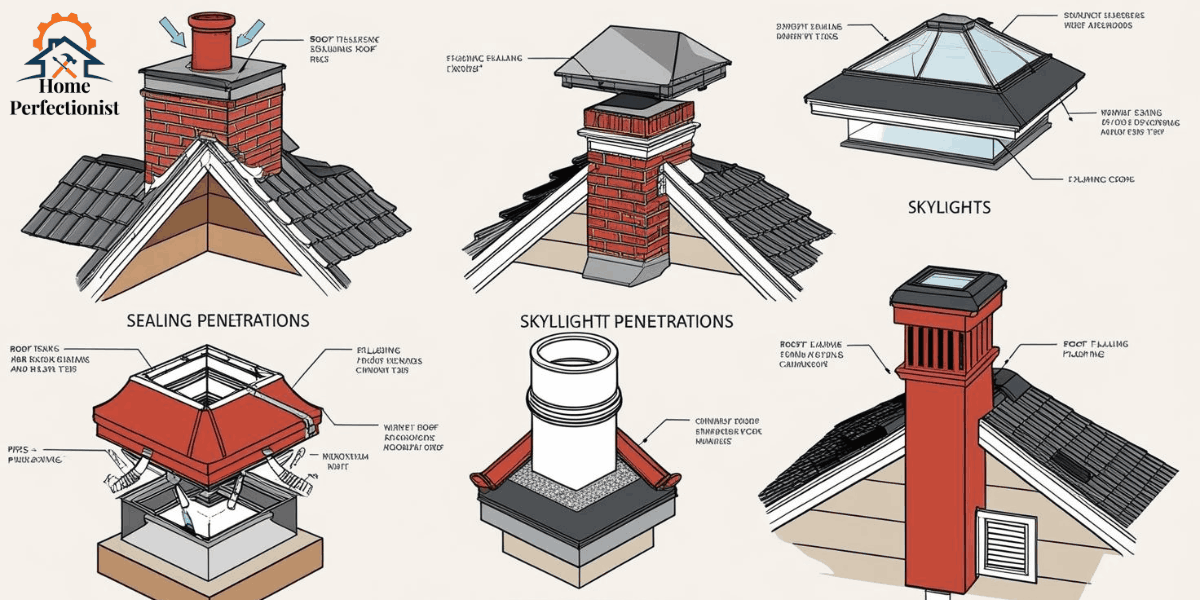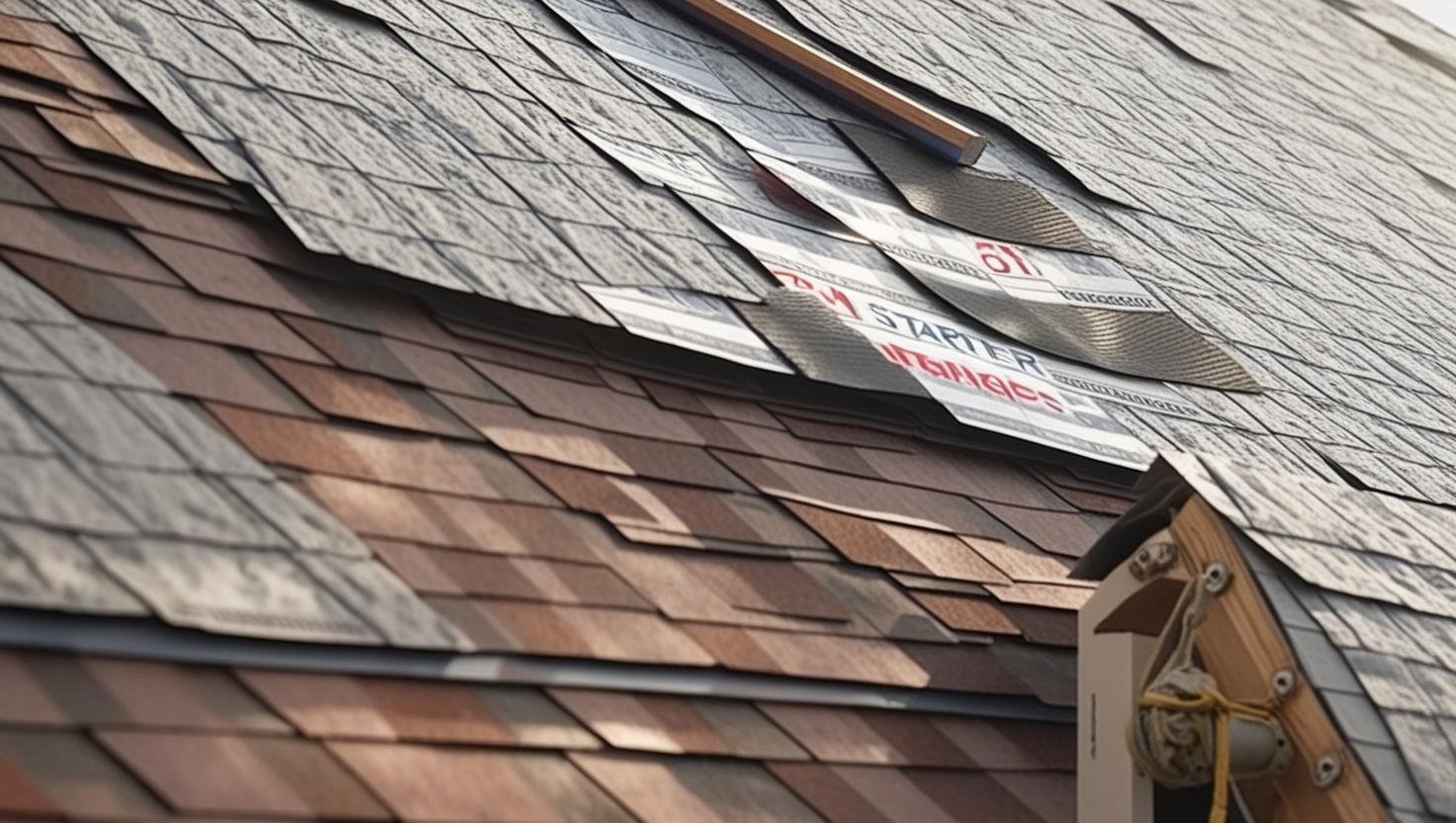What Is Roof Penetration? Unveiling Roof Basics, Pitch, and Protection
Table of Contents
ToggleWhen I first started inspecting roofs across Pennsylvania, I’ll admit, I was overwhelmed by all the technical terms—penetrations, pitch, flashing—you name it. It didn’t take long for me to realize that these terms aren’t just jargon; they’re critical to understanding how your roof system works. Take roof penetrations, for example. At first glance, they might seem like flaws or weak spots, but they’re intentional openings designed to serve essential functions. Whether it’s a chimney, skylight, vent, or HVAC unit, these elements are carefully installed and sealed to protect your roof from leaks and moisture damage. If done incorrectly, they can lead to serious issues like ceiling stains, rotting decking, or even structural damage.
That’s why proper installation and maintenance are so necessary. Durable materials, strong clamps, flexible brackets, and effective sealing methods can make all the difference. A skilled roofer will always consider factors like roof pitch, ventilation, and local building codes, especially when working with tiles or tight roofline areas. Over the years, I’ve noticed that homeowners who understand their roof system are better equipped to spot risks, ask the right questions, and make informed decisions.
Even something as simple as a kitchen exhaust vent passing through the roof requires proper ventilation to prevent heat buildup or moisture issues. If you’ve ever wondered why your energy bills are climbing or why your attic feels stuffy, it could be due to blocked vents or inadequate waterproofing. That’s why I always recommend checking the number of penetrations on your roof and ensuring they’re correctly maintained. Knowing the parts involved—like chimney boots or flashing kits—can help you prevent future problems and keep your roof strong and reliable through every season.
What Is a Roof Penetration?
A roof penetration is any part of your roof where an opening has been created to accommodate a vent, pipe, skylight, or HVAC unit. These openings are essential for functions like ventilation, plumbing, and drainage. While they might look like potential weak spots, they’re vital to your home’s functionality.
However, improper installation or maintenance can lead to leaks, water damage, and costly repairs. That’s why it’s so important to use high-quality flashing and sealing materials to keep water out. A good roofer will ensure these penetrations are secure and watertight, protecting your roof decking and preventing damage.
Remember that the more penetrations your roof has, the higher the potential cost for repairs or replacements. But don’t let that scare you—these features are necessary for your home’s efficiency and comfort.
Types of Roof Penetrations
1. Chimneys
These vent smoke and gases from your fireplace or heating system, keeping your indoor air safe and clean.
2. Skylights
They bring in natural light, reducing your need for artificial lighting and adding a beautiful touch to your home.
3. Dormers
These enhance your home’s curb appeal, add space, and improve attic ventilation.
4. Attic Vents
Critical for regulating temperature and preventing moisture buildup, which can damage your roof and insulation.
5. Plumbing Vents
These maintain proper pressure in your plumbing system, preventing water from siphoning out of traps.
6. Air Conditioning Units
Often require roof penetrations for installation and adequate airflow to keep your home cool.
7. Roof Vents
These expel hot air and moisture from your attic, protecting your roof and keeping your home comfortable.
8. Electrical Conduits
These protect wires running through your roof, ensuring safety and preventing fire hazards.
Common Roof Penetration Problems
While roof penetrations are necessary, they can cause significant problems if not properly maintained. One of the most common issues is poorly installed or deteriorating flashing. Flashing seals around penetrations like chimneys, vents, and pipes. Water can seep in when it fails, leading to leaks, mold growth, and structural damage.
Over time, exposure to the elements can cause flashing materials to become brittle and crack, creating gaps that let water in. That’s why it’s essential to use high-quality, non-porous materials and ensure proper seal during installation. Regular inspections by a reputable roofer can help catch these issues early and prevent costly repairs.

Signs Your Roof Penetrations Need Attention
Even with proper installation, roof penetrations can develop issues over time due to wear and tear, weather exposure, or poor maintenance. Knowing the warning signs can help you address problems before they escalate into costly repairs. Here are some key indicators that your roof penetrations may need attention:
1. Water Stains on Ceilings or Walls
If you notice brown or yellow stains on your ceilings or walls, it could be a sign of a leak around a roof penetration. Water often finds its way through gaps in flashing or damaged seals.
2. Mold or Mildew growth
Mold or mildew in your attic or near penetration points is a clear sign of moisture buildup. This often occurs when vents or chimneys aren’t correctly sealed, allowing water to seep in.
3. Higher Energy Bills
If your heating or cooling costs suddenly spike, it could be due to poor ventilation caused by blocked or damaged roof penetrations. Proper airflow is essential for maintaining energy efficiency.
4. Visible Gaps or Cracks Around Penetrations
Inspect your roof for visible gaps, cracks, or missing flashing around chimneys, vents, or pipes. These openings can allow water to infiltrate your roof system.
5. Peeling Paint or Warped Wood
Moisture from a leaking roof penetration can cause paint to peel or wood to warp, especially in your attic or near penetration points.
6. Rust or Corrosion on Flashing
If the flashing around your roof penetrations shows signs of rust or corrosion, it’s likely no longer providing an effective seal. This can lead to leaks and water damage.
7. Debris or Blockages in Vents
Blocked vents or chimneys can prevent airflow, leading to heat buildup and moisture issues. Regularly check for debris like leaves, nests, or dirt.
Why Early Detection Matters
Catching these signs early can save you from extensive damage and costly repairs. For example, a small leak around a skylight might seem minor, but over time, it can lead to rotting decking or mold growth. Regular inspections and prompt repairs are key to maintaining your roof’s integrity.
If you notice any of these signs, it’s best to call a professional roofer to assess the situation. They can identify the root cause and recommend the right solutions, whether replacing flashing, resealing gaps, or clearing blocked vents.
Solutions for Roof Penetration Issues
The key to preventing problems with roof penetrations is proper installation and maintenance. Here’s what you can do:
- Use High-Quality Materials: Invest in durable flashing, sealants, and roofing cement to ensure a watertight seal.
- Regular Inspections: Have a professional roofer check your roof periodically, especially after severe weather.
- Proper Installation: Make sure penetrations are installed correctly, with attention to detail around flashing and sealing.
- Custom Solutions: Depending on your roof type (flat or pitched), you may need tailored solutions to address specific challenges.
For example, materials like S355 HDG steel offer excellent durability for outdoor environments, but they must be installed correctly to be effective. Whether you’re dealing with a chimney, vent, or radio antenna, the proper installation and sealing techniques will keep your roof secure and functional.
Can Avoiding Roof Penetrations Harm Your Roof?
Believe it or not, avoiding roof penetrations can do more harm than good. These openings are essential for ventilation, plumbing, and installing equipment like HVAC units or solar panels. Without them, your roof could suffer from moisture buildup, poor ventilation, and structural damage.
For instance, inadequate attic ventilation can lead to mold growth, rotting wood, and higher energy bills. Similarly, blocked chimneys or vents can create fire hazards or carbon monoxide risks. While it might seem like fewer penetrations mean fewer problems, they’re necessary for your home’s safety and efficiency.
How to Seal Roof Penetrations to Avoid Damage
1. Gather the Right Materials
You’ll need roofing cement, sealant, flashing (metal or rubber), roofing nails or screws, a utility knife, a caulking gun, measuring tape, a wire brush, primer (if needed), and safety gear like gloves and safety glasses.
2. Clean the Area
Use a wire brush to remove debris, old sealant, or loose materials. A clean surface ensures better adhesion for sealants and flashing.
3. Install Flashing
Slide a rubber boot or metal flashing over the penetration and secure it with nails or screws. For chimneys, use step flashing layered between shingles.
4. Seal the Edges
Apply roofing cement or sealant around the edges of the flashing to fill any gaps. Use a caulking gun for precision.
Regular maintenance and inspections will help ensure these seals remain intact and effective.
Conclusion
Roof penetrations are vital to your home’s functionality, providing ventilation, plumbing, and other essential systems. However, improperly installed or maintained can lead to leaks, water damage, and structural issues.
Regular inspections, high-quality materials, and proper sealing techniques are key to avoiding these problems. By understanding the role of roof penetrations and taking proactive steps to maintain them, you can protect your home and extend the life of your roof.
Whether dealing with a chimney, vent, or skylight, the right approach will keep your roof strong, secure, and leak-free for years.
What Is Roof Penetration? (FAQs)
1. What is the purpose of roof penetrations?
Roof penetrations are openings that accommodate essential systems like vents, chimneys, plumbing, and HVAC units. They ensure proper ventilation, drainage, and functionality for your home.
2. Can roof penetrations cause leaks?
If not correctly installed or maintained, roof penetrations can lead to leaks. Poorly sealed flashing or damaged materials are common culprits.
3. How often should I inspect my roof penetrations?
Inspecting your roof penetrations at least once a year or after severe weather events is recommended to ensure they’re in good condition.
4. What materials are best for sealing roof penetrations?
High-quality flashing (metal or rubber), roofing cement, and sealants are essential for creating a watertight seal around penetrations.
5. Can I avoid roof penetrations altogether?
Avoiding roof penetrations is not advisable, as they’re necessary for ventilation, plumbing, and other systems. You risk moisture buildup, mold growth, and structural damage without them.



